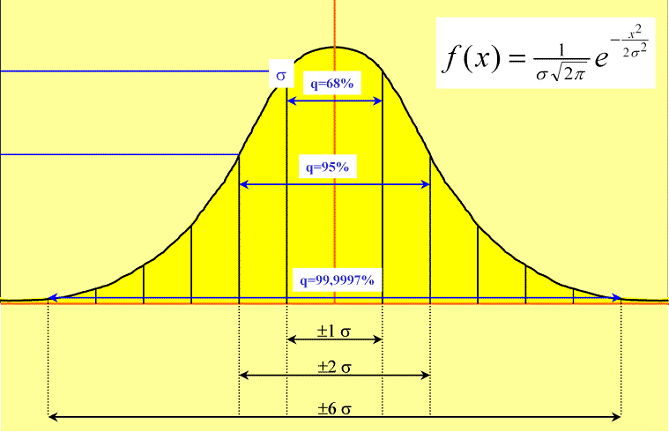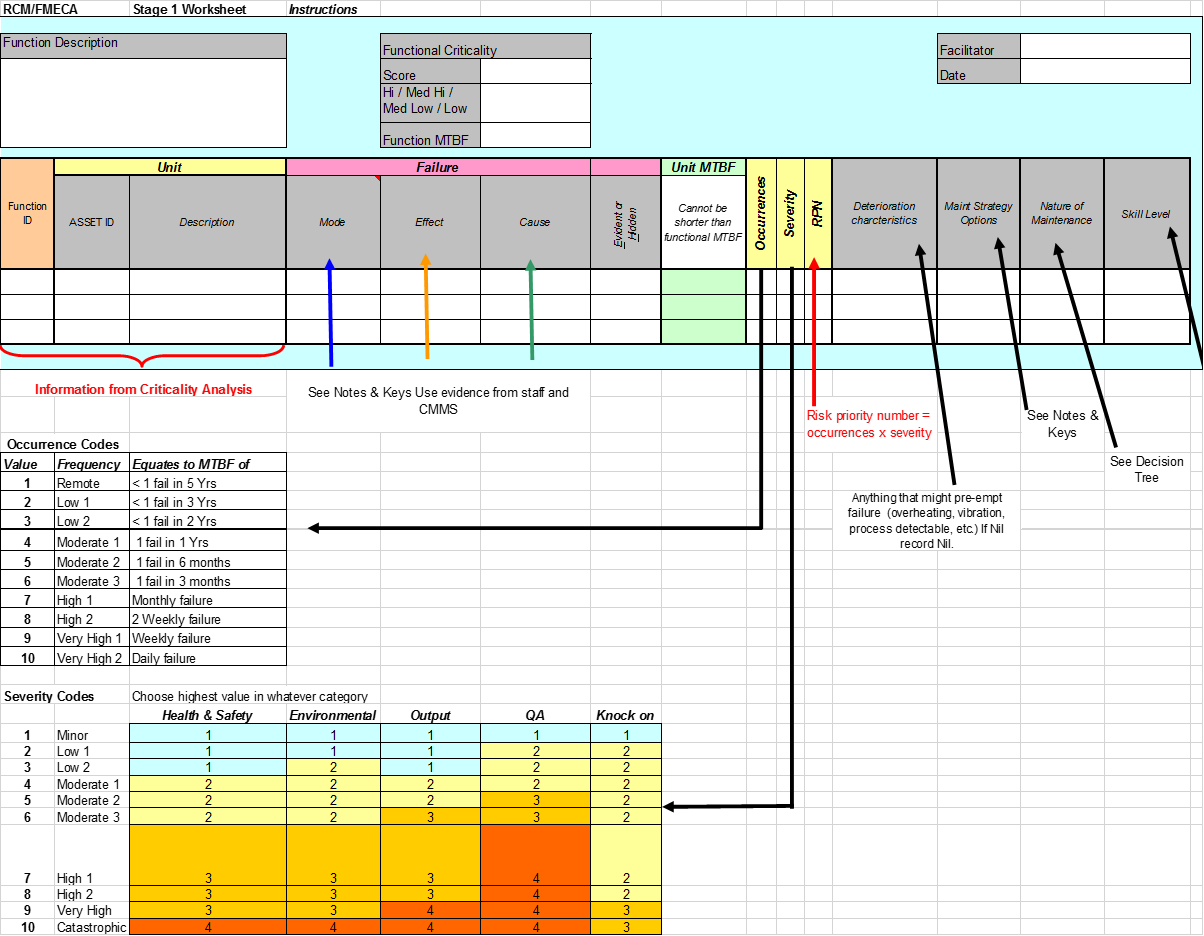In this article the Measure Phase of the DMAIC process will be explored and tools used shown after first refreshing on what 6 Sigma is about.
6 Sigma Explained
A defect is any incident or event which fails to meet the customers expectations.
Standard deviation is the measure of variation within a process. It is indicated by the symbol, sigma (s). A review of the normal distribution bell curve below shows that:
- 68% of defects fall within 1s of the mean
- 95% of defects fall within 2s of the mean
- 99.99997% of defects fall within 6s of the mean

6 Sigma deviations bell curve
By aiming processes at Six Sigma, then, there would only be 3.4 defects per one million opportunities.
6 Sigma & DMAIC – The Measure Phase
DMAIC is a framework that standardizes how projects are managed – Define Measure Analyze Improve and Control are the phases that make up the DMAIC process.
The measurement phase is about Measuring your current activities and processes to identify areas of opportunity to improve, This will also
provides insight into what is actually occurring today.
Measure Phase Tools
You can select from a broad range of data and process tools, including the
following:
- Creativity Tools Brainstorming
- Process mapping
- Lead time sheet
- Cycle efficiency sheet
- Changeover time study
- Variation Tools Run charts
- Control charts
- Process capability document
- Pareto charts
- Cause and Effect Matrix
- FMEA
Typically a process map is created to identify the process or product steps within a process so that opportunities to reduce variation can be identified, once a source or variation is identified we can use a tool like cause and effect or FMEA to identify the root cause or appropriate

6 Sigma & DMAIC – The Measure Phase FMEA
You are now confronted with one of the most variable processes. There is no standard order for choosing the techniques your team must use. They must apply their own rational and expertise to select the most appropriate tools for the project. The reviews must address the logic that your team has pursued in their decision on what data to collect and where this data has taken you. In the pursuit of this knowledge, the reviews must address the following questions:
- Where did you get the data?
- Can you explain your measurement system?
- What have you learned from your data charts?
- Can you show me your cause and effect diagram?
- Can you extrapolate the cause in the data you are collecting?
- Why did you decide to collect that particular kind of data?
In my next Article we look at the Analyze phase and explore tools used and the approach taken
We really hope you have found this article of value and that it has inspired you to learn more about DMAIC, just remember the hardest part of any journey is getting started but once begun you will learn it’s an enjoyable and rewarding experience that can improve your organization’s culture and performance in a very positive way.
